Fantasia 2019, Day 17, Part 5: Les Particules
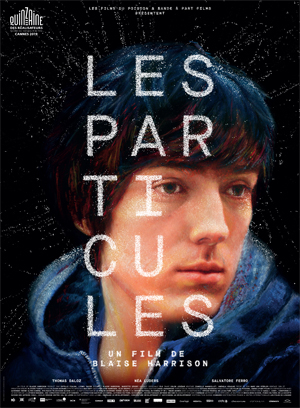 For my last movie of July 27 I crossed the street to the De Sève Cinema to take in the French-Swiss co-production Les Particules (The Particles). It’s the first fiction feature by director Blaise Harrison, who co-wrote the script with Mariette Désert. After a day of particularly frenetic movies, this was good way to end the evening; a subtler, atmospheric, intelligent, and character-based film that thoroughly succeeded at what it was trying to do.
For my last movie of July 27 I crossed the street to the De Sève Cinema to take in the French-Swiss co-production Les Particules (The Particles). It’s the first fiction feature by director Blaise Harrison, who co-wrote the script with Mariette Désert. After a day of particularly frenetic movies, this was good way to end the evening; a subtler, atmospheric, intelligent, and character-based film that thoroughly succeeded at what it was trying to do.
The movie follows Pierre-André, or P.A. (Thomas Daloz), an inarticulate older teen in a small town on the Franco-Swiss border. He’s in a band, kind of, or at least has a group of friends; we see them at school, and buying drugs, and taking drugs, and wandering around. We see a romance between P.A. and a chronically ill girl named Roshine (Néa Lüders), and watch their relationship develop. It’s all good slice-of-life storytelling.
Except we also follow P.A. on a school trip into the Large Hadron Collider hundreds of feet below their village. And we come to suspect the installation might be linked to the strange things that happen over the course of the movie, slowly at first, then as the film goes on a little faster and a little more obvious. Reality changes. Things, and characters, disappear. Are the quantum-level forces of the LHC causing the world to change? Or does this have to do with mental illness? Or both?
This is a stunning movie, in its sound and images, but also in the way it brings out the sense of lived experience and everyday life. And then again in the way that everyday life fits into a symbolic pattern, exploring many meanings of ‘particles’ in human existence and in the larger world. So the first shot is a view from above of the countryside as P.A. takes the bus to school: lights of houses, here and there, against the darkness of the night, glowing particles in blackness. And so, later, Christmas tree lights are something similar. So also is snow, as winter and the school year wind on.
But the crucial point, I think, is that the youths we see in the film are particles themselves, fitting into the school system, fitting (or not fitting) into society, bouncing off each other in unexpected collisions. P.A.’s relationship with Roshine is symbolically matter and anti-matter meeting. The hard physics of the LHC provide the underpinning for a metaphor that gives the material of the film some unity.
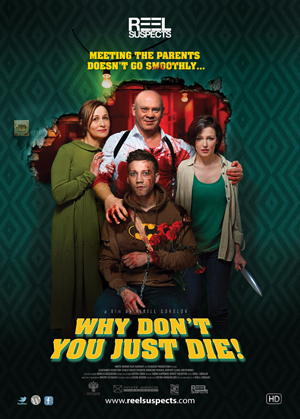 My fourth film of July 27 was once again in the Hall Theatre. It was a Russian film about which I had heard very good things, with one web site calling it among the best action movies of the year so far. You may have heard of Chekhov’s gun; well, Why Don’t You Just Die! (Papa, Sdokhni) gives us Chekhov’s gun, along with Chekhov’s other gun, Chekhov’s claw hammer, Chekhov’s power drill, Chekhov’s CRT TV, and any number of Chekhov’s other odds and ends.
My fourth film of July 27 was once again in the Hall Theatre. It was a Russian film about which I had heard very good things, with one web site calling it among the best action movies of the year so far. You may have heard of Chekhov’s gun; well, Why Don’t You Just Die! (Papa, Sdokhni) gives us Chekhov’s gun, along with Chekhov’s other gun, Chekhov’s claw hammer, Chekhov’s power drill, Chekhov’s CRT TV, and any number of Chekhov’s other odds and ends. 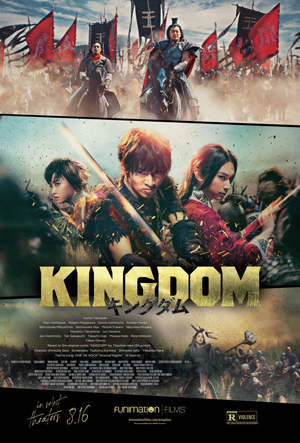 My third movie of July 27 was a live-action manga adaptation by the dauntless and prolific
My third movie of July 27 was a live-action manga adaptation by the dauntless and prolific 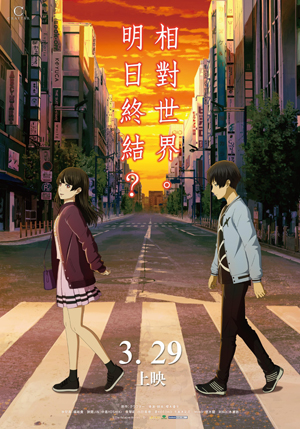 For my second film of July 27 I stuck around the Hall Theatre for another animated feature, this time from Japan. Preceding it was a 13-minute animated short from Canada.
For my second film of July 27 I stuck around the Hall Theatre for another animated feature, this time from Japan. Preceding it was a 13-minute animated short from Canada.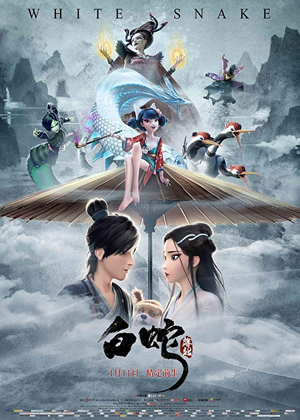 Saturday, July 27, was going to be a long day for me at Fantasia. Hopefully a good one, too. I had five movies on my schedule, starting at noon with the animated Chinese fantasy-adventure White Snake (白蛇:缘起, 白蛇:緣起).
Saturday, July 27, was going to be a long day for me at Fantasia. Hopefully a good one, too. I had five movies on my schedule, starting at noon with the animated Chinese fantasy-adventure White Snake (白蛇:缘起, 白蛇:緣起).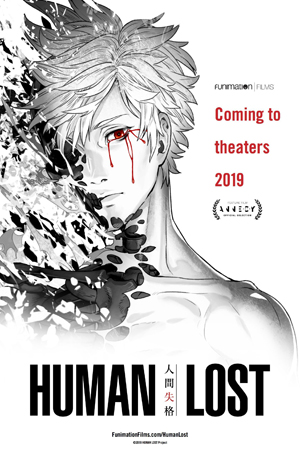 My second film of July 26 was in the big Hall theatre, a science-fiction anime called Human Lost (人間失格). Directed by Fuminori Kizaki, it was scripted by Tou Ubukata based on a novel by Osamu Dazai. The movie’s set in 2036, when advanced nanotechnology has given human beings a lifespan of 120 years but turned Japan into a deeply unequal society, with the wealthy sequestered inside a vast citadel called “the Inside.” Some people, for unclear reasons, metamorphose into monsters: the ‘Human Lost’ phenomenon. A troubled young artist, Yozo Oba (Mamoru Miyano), gets involved with his cyborg friend Takeichi (Jun Fukuyama) when he attempts to break into the Inside, and sets off a complex series of events which bring to light the truth about the Human Lost problem and the future of 2036 — but which also might drive Yozo over the edge of sanity.
My second film of July 26 was in the big Hall theatre, a science-fiction anime called Human Lost (人間失格). Directed by Fuminori Kizaki, it was scripted by Tou Ubukata based on a novel by Osamu Dazai. The movie’s set in 2036, when advanced nanotechnology has given human beings a lifespan of 120 years but turned Japan into a deeply unequal society, with the wealthy sequestered inside a vast citadel called “the Inside.” Some people, for unclear reasons, metamorphose into monsters: the ‘Human Lost’ phenomenon. A troubled young artist, Yozo Oba (Mamoru Miyano), gets involved with his cyborg friend Takeichi (Jun Fukuyama) when he attempts to break into the Inside, and sets off a complex series of events which bring to light the truth about the Human Lost problem and the future of 2036 — but which also might drive Yozo over the edge of sanity.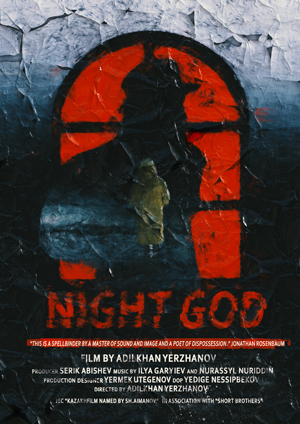 My first film on Friday, July 26, was a Kazakh work playing at the de Sève Cinema. Written and directed by Adilkhan Yerzhanov, Night God is a particular sort of uncompromising. It’s a beautiful picture, but extremely slow, still, and self-consciously meditative. I was deeply moved, for all its studied avoidance of simple dramatic action.
My first film on Friday, July 26, was a Kazakh work playing at the de Sève Cinema. Written and directed by Adilkhan Yerzhanov, Night God is a particular sort of uncompromising. It’s a beautiful picture, but extremely slow, still, and self-consciously meditative. I was deeply moved, for all its studied avoidance of simple dramatic action.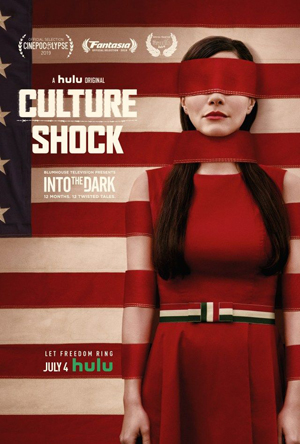 On June 25 I went to the De Sève Theatre for the one movie I’d see that day at the Concordia campus. It was called Culture Shock, and while it’s available on Hulu, this was a rare chance to see it in Canada.
On June 25 I went to the De Sève Theatre for the one movie I’d see that day at the Concordia campus. It was called Culture Shock, and while it’s available on Hulu, this was a rare chance to see it in Canada. 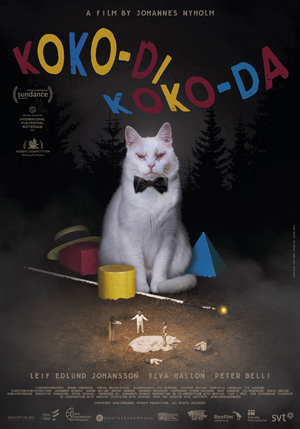 There was only one film I planned to watch on July 24, and that was writer-director Johannes Nyholm’s Koko-di Koko-da. It promised to be a strange movie about characters trying to break out of a time loop, and I settled in at the De Sève Theatre wondering at the horror elements implied by the film’s description in the festival catalogue.
There was only one film I planned to watch on July 24, and that was writer-director Johannes Nyholm’s Koko-di Koko-da. It promised to be a strange movie about characters trying to break out of a time loop, and I settled in at the De Sève Theatre wondering at the horror elements implied by the film’s description in the festival catalogue.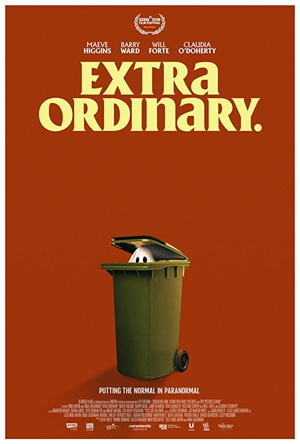 I had one film on my schedule for July 23, an Irish horror-themed comedy named Extra Ordinary. It was preceded by one of the best shorts I saw at Fantasia this year outside of a short film showcase.
I had one film on my schedule for July 23, an Irish horror-themed comedy named Extra Ordinary. It was preceded by one of the best shorts I saw at Fantasia this year outside of a short film showcase.